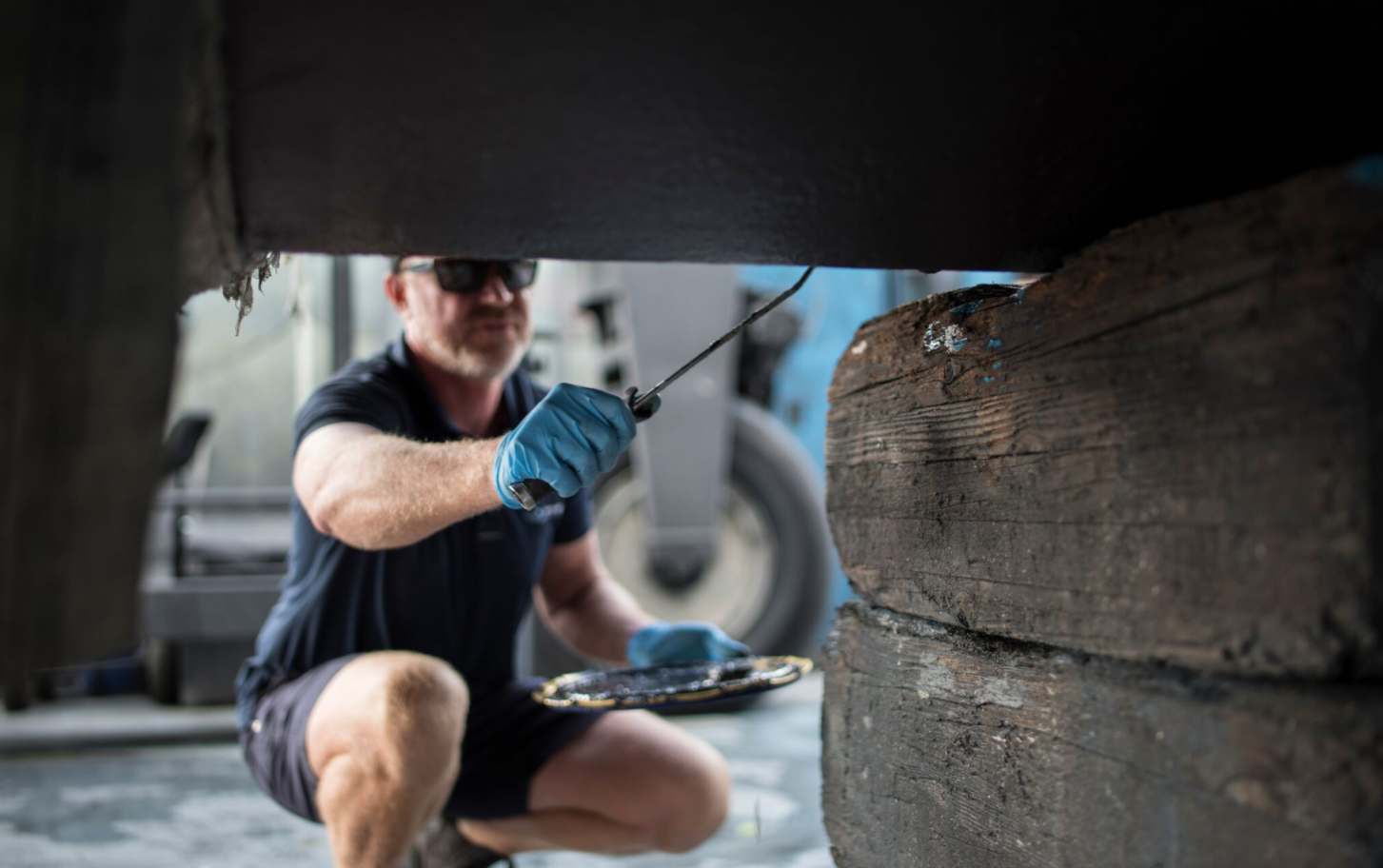HOW TO CLEAN THE BOTTOM OF A BOAT
While the fun part of owning a boat is hitting the open water, a crucial part of maintaining a boat is to clean the hull from time to time. The bottom of the boat is an area that needs a lot of maintenance, depending on how long it has been in the water and how much it has been used, as well as the local conditions.
You can end up with an entire ecosystem of marine pests living under there if not checked regularly.
A fouled-up hull causes drag, which results in increased fuel consumption and less boat speed. Heavy fouling can be visibility noticeable and causes the boat to sit lower in the water.
Depending on what materials the boat has been constructed with, consider the most appropriate and effective way of cleaning, given the environmental considerations.
In most cases, you don’t need to use chemicals when cleaning, but in some circumstances, you need to use extra products when the growth is dry and is stuck to the hull.
While cleaning your boat, there is a golden opportunity to antifoul, which has the ability to prevent future growth. Antifoul paint is a chemical treatment that’s applied to a hull to make the surface uninhabitable for aquatic organisms.
CLEANING THE BOTTOM OF A BOAT UNDERWATER
Bringing a boat out of the water is not always an option for some owners, given the size of the boat, access to marina facilities or the boat's location.
It is possible to scrub barnacles off your boat while in the water.
Most cleaning can be completed with a scuba kit, a sponge and a light-duty scrubbing pad. It is advised that this should be done every couple of months.
Prevention is better than a full-scale clean, so don’t wait for the barnacles to build up because they’ll be harder to remove.
There are many different cleaning tools available to tackle cleaning the hull. If you're not willing to get in the water, there are scrubbers available that can be used from the comfort of your deck.
If you are hitting the water, consider the conditions and water temperature before attempting to clean the hull, and even then keep an eye on the time to track how long you're in the water. Make sure you fully prepare the cleaning process before diving in. Wear gloves and appropriate eyewear to work underwater.
A common scraper will do the job most of the time, but for heavy-duty cleaning there are rotary brush systems you can use. Use marine-grade cleaners that won’t affect the marine environment.
When you are in the water, keep all electrical elements turned off - you don’t want any nasty surprises while you’re under the water.
Work in good lighting by following the direction of the sun, which will make it easier to see below the surface and evaluate the condition of the hull.
CLEANING A BOAT OUT OF THE WATER
Cleaning your boat while still in the water does present a few challenges, in particular it is hazardous to the environment. Scrubbing off marine life comes with a risk as there’s a chance that paint will be scrubbed off and released into the water.
There are regulations on releasing chemicals into the ocean. There will also be state laws that will specify what underwater boat cleaning is allowed.
In certain situations it is better to bring the boat out of the water to remove marine life and antifoul the boat.
When your boat is out of the water and raised to provide access to the bottom of the vessel, you will want to tackle your boat’s hull using a rinse-clean-rinse process.
Rinse the hull to remove any salt, algae, or mould that has built up over time, giving you a smooth surface to wash.
Use a sponge dipped in cleaning solution to wipe down the hull, paying extra attention to the waterline. Usually, this is the place where the weeds and the slime are tough to get off, where the hull of the boat touches the surface of the water. Scrub in circles using enough force as required without damaging the boat’s paint job.
Rinse again to remove waste and dispose of it properly.
If done regularly enough, the cleaning process may be as simple as a rinse and scrub with a sponge, but if it has been left to build up, a putty knife can work well in removing growth.
METHODS FOR PREVENTING FURTHER FOULING
After you have given your boat a good clean, wax it to prevent damage from UV rays, and protect the boat’s decal and paint from wearing off.
If your boat is going to stay in the water and you're unable to use it regularly you will need to antifoul your boat. This process needs to be done every nine to 15 months, depending on how much you use the boat, and where it is located.
Generally speaking, there are two types of antifouling paint to choose from to suit the needs of your boat. There are hard coatings and ablative/eroding coatings which serve different purposes. Check out our guide on the types of anti-fouling paint to make sure you are choosing the right one.




